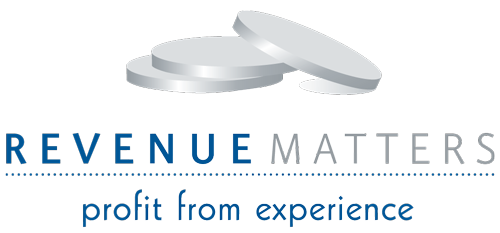
A Historical Perspective
The airlines are credited for developing the foundational science behind revenue management. Almost since the beginning of commercial flight, airlines had attempted to maximize their revenues by focusing on filling as many seats as possible on every flight. This meant predicting how many booked passengers would show up for a flight and how many wouldn’t. Overbooking by that predicted amount was the technique that was deployed to meet their objective.
In the early 1970’s, airlines began experimenting with “fenced” pricing such as offering a discount to passengers who booked more than 21 days in advance. This meant that airlines now had the opportunity to sell additional seats that may otherwise have gone empty. It also meant that the need for tracking and quantitative analysis grew exponentially since customer response to these fare alternatives varied based on season, day of week, time of day, city pair (origin and destination), reason for travel (business or pleasure) and many other variables. In 1972, Ken Littlewood of British Overseas Airways Company (BOAC) now known as British Airways proposed a rule that discounted fares be accepted if their revenue value exceeded the expected revenue of future full fare bookings. Littlewood’s Rule marked the start of what became yield management and later, revenue management.
In October 1978, President Jimmy Carter signed the airline deregulation act which marked the shift from US airlines being a regulated public utility to being part of a free market system. It was then that the practice of yield management was truly put to the test. It passed. Robert Crandall, former Chairman and CEO of American Airlines, gave yield management its name and has called it “the single most important technical development in transportation management since we entered deregulation.”
A decade later fledgling yield management practices began within the hospitality industry. In fact, it wasn’t until 1988 that the first yield management-related article appeared in Cornell Quarterly and some of the larger hospitality brands began to experiment by utilizing yield management principles. Unlike the airlines with scores of specialists skilled at quantitative analysis, yield management responsibilities in the hospitality sector fell into the lap of those in other roles – mainly reservation sales managers.
Today the term yield management is outdated and has been replaced with the term revenue management which reflects a broader perspective. Yield management generally refers to an inventory-centric approach to selling the right product to the right customer at the right time at the right price. The term revenue management refers to a business practice designed to optimize the revenue potential of an asset through all market conditions. It is important to note that yield management principles remain as a fundamental component of revenue management and several conditions must exist for it to apply. Those conditions are as follows:
- A fixed amount of resources are available for sale at any given time
- Resources are perishable (after a given point in time, resources are not sellable)
- Different customers are willing to pay a different price for the same resources
- There is some ability to predict future demand for resources
Important note: Demand does NOT need to exceed supply in order for revenue management principles to apply. In the early days of hospitality revenue management, the discipline was predominantly reactive in nature. The two tactical levers of pricing and inventory controls were used either independently or in conjunction with each other in response to existing demand. The focus was on raising or lowering rates and placing or removing minimum night stay requirements to maximize the room revenue potential for any given property.
Revenue Management Today
Today, revenue management practitioners in hospitality are far more proactive in that they contribute to driving revenue streams vs. simply reacting to them. Most progressive hospitality organizations fully recognize the critical function this discipline serves and have a structure that supports specialists who sole focus is on revenue management. Other operations with limited human capital may not have a dedicated resource, but do apply revenue management principles – weather they realize it or not.
As previously stated, revenue management is a business practice designed to optimize the revenue potential of a given asset through all market conditions. The process that most practitioners follow today involves a continuous cycle of six basic steps:
Step 1: Tracking
The best decisions are often a blend of intuition and science. In order to understand the impact of these decisions, it is critical that factual data be gathered and used to help make even better decisions in the future.
Automation and decision support tools have evolved as the revenue management discipline has grown and provide business insights that no human could possibly calculate on their own. Some may argue therefore that this automation can and should replace the role of a revenue management professional. That’s like saying a calculator can replace an accountant, or a newly engineered golf club can replace a PGA professional. The ideal solution is when automation provides insights for the revenue management professional and the revenue management professional provides appropriate feedback within the system.
Even without automation, data can be gathered and stored manually. Below are just a few examples of what should be retained by a typical hotel operation with the primary focus being on room revenue generation:
- Historical key performance indicators (KPI’s)
- Units sold
- Occupancy
- Average Rate
- Revenue per available room (RevPAR)
- Market segment production by day
- Leisure
- Corporate
- Group
- Contract
- Crew
- Rate plan production
- Channel production
- Reservation sales volume
- Pace vs. same point in time prior year
- Competitive intelligence
- KPI benchmarking
- Publicly available pricing
- Key actions
Step 2: Forecasting
Predicting future demand based on past results is a good starting point to developing a strategy. Of course changes in market conditions, competitive supply, capacity constraints, special events, floating holidays, weather conditions, economic climate and other external factors necessitate some additional thought around true demand potential.
Every forecast involves some margin of error so it is important to determine what your thresholds are for error. These may vary considerably for a 30-60-90 day financial forecast as opposed to a 12-day operational forecast. Upside tolerances (exceeding forecast) may also be greater that downside tolerances (missing forecast).
What to forecast is also critical. Profit and loss statements normally reflect some level of customer segmentation and forecasting this segmentation is helpful in driving financial forecasts within current models. The challenge with this approach is that traditional market segmentation is an end product of numerous activities and may not align well with customer behavior. For example, marketing and distribution activities relating to attracting guests through a given channel may result in a given guest staying Thursday – Sunday and perhaps another staying Saturday – Wednesday. Could we say with certainty that these stays would be consistently coded to the correct segment whether that is the corporate or the leisure segment? Perhaps it is time to reconsider what constitutes a segment in the context of a forecast model.
Step 3: Pricing
Those without an understanding or appreciation for the scope of the discipline often equate revenue management to simply changing prices, or worse – discounting. The reality is that pricing in hospitality today is far more complex than this.
Basic economic theory would dictate that equilibrium pricing, where the demand curves meets the supply curve, would be optimal. Unfortunately, inventory (i.e. rooms, restaurant seats, tee times, spa appointments etc.) is perishable so this approach would under-utilize a given resource’s potential.
Like the airlines that experimented with different fare classes based on advance purchase windows, hotels also attempt to fence demand by placing certain conditions around what customers can obtain what rates. Those fences can consist of differences in policies, booking channels, length of stay, stay patterns, advance purchase deadlines, affinity groups and more.
Other pricing considerations and techniques may include such elements as:
- Competitive price positioning
- Bracketing (pricing above and below a competitor simultaneously)
- Increasing or decreasing granularity (changing pricing steps between products)
- AB testing
- Unbundling
- Dynamic packaging
- Value adds
- Volume concessions
- Up-selling
- Ancillary revenue potential
- Theoretical Value (for gaming operations)
- And much more…
- The end game is always to optimize the revenue potential for a given asset. This extends beyond the core product offering.
Step 4: Inventory Management
Once future demand has been forecasted and pricing strategies determined, resource allocation or inventory management in the case of hotel rooms comes into play. Inventory management simply means opening or restricting inventory for sale based on certain conditions.
Depending on the system configurations, inventory controls may be placed at various levels including:
- Property Level
- Wing Level
- Unit Category Level
- Unit Type Level
- Property Level
To further add complexity, in certain situations restrictions can also be placed at the rate category or rate type levels. The same restriction control placed at any given level will have a dramatically different impact for the property. Typical restriction controls include:
- Closed (Closed) – this is the most restrictive type of control as no reservations can be accepted that touch the closed date
- Closed to Arrival (CTA) – guests may stay on a night with a CTA restriction, but may not arrive on that night
- Minimum Stay (Min X) – Any guests arriving on a date with a Min X restriction must at least stay the number of nights specified by the control. For example a Min 3 on a Tuesday night means that a guest must checkout on Friday or later before the reservation will be accepted.
- Maximum Stay (Max X) – Any guest arriving on a date with a Max X restriction must depart on or prior to the number of nights specified by the control. For example a Max 3 on a Tuesday night means that a guest must checkout on Friday or before in order for the reservation to be accepted.
- Minimum Stay Through (MS) – This control is similar to a Min X control, except that it applies to any reservation that touches a night where this control is in place, not just for guests arriving that night. A Min 2 and MS2 control behaves identically; however, these controls will produce vastly different results for anything greater than 2 night restrictions.
- Some systems deploy a full pattern length of stay (FPLOS) control with an upper limit of 7 controls. In the below example a guest on a certain date may not stay 1 night, but can stay 4 nights. They also may not stay 6 nights but would be permitted to stay greater than 7 nights.

Most automated revenue management systems today consider the value of a given reservation for the core inventory (i.e. hotel rooms). Others may factor ancillary spend potential. In either case, the method used is to calculate a hurdle or threshold for each night. Reservations meeting or exceeding this value are accepted and those below this value are not. For multiple night stays, the cumulative reservation value is compared against total hurdle value. The algorithms used to calculate the hurdles are proprietary, but are fundamentally based on historical demand and current pace.
Step 5: Distribution
Distribution refers to how guests find and book a property. Telephone, Online Travel Agencies, Global Distribution Systems and Internet Booking Engines are all examples of distribution channels. Each may offer a different value proposition, but each requires that a revenue management professional think through how to best leverage the potential that each represents.
Costs and production performance also vary considerably by channel, so clearly understanding those elements is very important in determining a distribution strategy.
With the advent of the Internet channels in 1996, the distribution landscape changed. Attracting relatively few adopters at first and with hotel room demand waning, those in hospitality revenue management saw an opportunity to appeal to a new “fenced” audience – the fence being relatively low consumer adoption of online technology for booking travel. Online discounts were offered, and adoption rates skyrocketed. Consumers widely believed that the web was the channel that offered the lowest rates.
Hoteliers responded by deploying the same publicly available rate across all channels (rate parity) and attempted to shift consumer perceptions by offering lowest rate guarantees for reservations made on their proprietary websites. This remains as an ongoing theme today.
Step 6: Communication
Despite the best intentions and careful planning, a sound strategy can be easily derailed if key stakeholders don’t understand the role they play or don’t believe in the approach. This is true for front-line associates as well as senior leadership.
It’s no good to implement a length of stay restriction on a certain night for example and have a reservation sales agent allow a shorter stay for a general caller. It’s equally challenging when a group sales manager neglects to share that a group is not going to pick up to their anticipated level, or a front desk associate gives away a free night as compensation for a poor guest experience at the pool.
A company culture that supports revenue management efforts is a vital. Without it, the impact of applying revenue management principles will be significantly diminished.
While a top-down approach may work in the short term, it is generally best to create buy-in amongst all stakeholders so that strategies are supported. One recommendation is to have a weekly revenue strategy meeting with at least the General Manager, Front Office Manager, Director of Sales and Marketing, Controller, eCommerce Manager, Reservation Manager and Director of Revenue Management. The following is an example agenda with each of the stakeholders contributing to part of the meeting:
- MTD financial performance KPI’s (Controller)
- Discuss significant variances to budget and/or forecast (All)
- Pace Report (Director of Revenue Management)
- Daily Segment Tracking (Reservation Sales Manager)
- Group highlights (Director of Sales and Marketing)
- Front office update (Front Office Manager)
- Reservation update (Reservation Sales Manager)
- eCommerce / marketing update (eCommerce Manager)
- Strategy Review (Director of Revenue Management)
- Roundtable (All)
- Action summary & assignments (Director of Revenue Management)
- Adjourn
Of course once a strategy has been implemented the process begins again with Step 1 – tracking. This process is one of continuous improvement; however, some element of experimentation will be likely. Some actions will have a positive impact and others won’t. The secret is to fail quickly and ensure learning is documented.
A Glimpse into the Future
The discipline of revenue management has evolved rapidly from its inception and it is anticipated to continue to do so as business conditions dictate. Below are some predictions for where we are headed:
- Senior leadership within hospitality operations and organizations will have held a revenue management related role at some point in their careers.
- The term revenue management will become outdated and likely replaced by revenue optimization or a similar term reflecting additional focus on non-core inventory elements.
- Chief revenue officers will be common. All revenue-producing activities and departments will report to this individual.
- Reporting lines for those in a revenue optimization role will be directly to senior leadership.
- Technology will continue to evolve to support increasingly sophisticated analysis beyond inventory elements.
- Demand AND supply based forecasting will become the norm.
- New business intelligence data, reports and methodology will emerge to the point where decision making will become more challenging because of the volume of information available. Resources and solutions will emerge to cut through this information clutter and aid in providing a consolidated view.
- Revenue optimization in hospitality will become more quantitative vs. qualitative. Manual record keeping and report preparation will diminish and will be replaced by dashboards and automated decision support technologies.
- Distribution will continue to become even more complex than it is today as new business models emerge to fill specific customer needs.
- Disintermediation will not occur, but cost of distribution will come down. Supplier direct business will continue to be a major contributor to an organizations overall revenue mix, but contribution percentages will plateau.
- The concept of price parity will be challenged and contracts with online travel agencies will be based on share shift vs. straight margins.
- Individual customer value will be used to determine availability of product and prices.
- Formal education institutions will enable students to major in revenue optimization.
- Ancillary revenue optimization and resource management will come under the purview of revenue optimization.
One thing is very clear; the role revenue management will remain foundational in progressive organizations. Those that embrace it will have a distinct strategic advantage over competitors. It is the diligent efforts of those early pioneers got us to where we are today and have what has paved the way for the future of this discipline.
This article was first published on HotelExecutive.com



